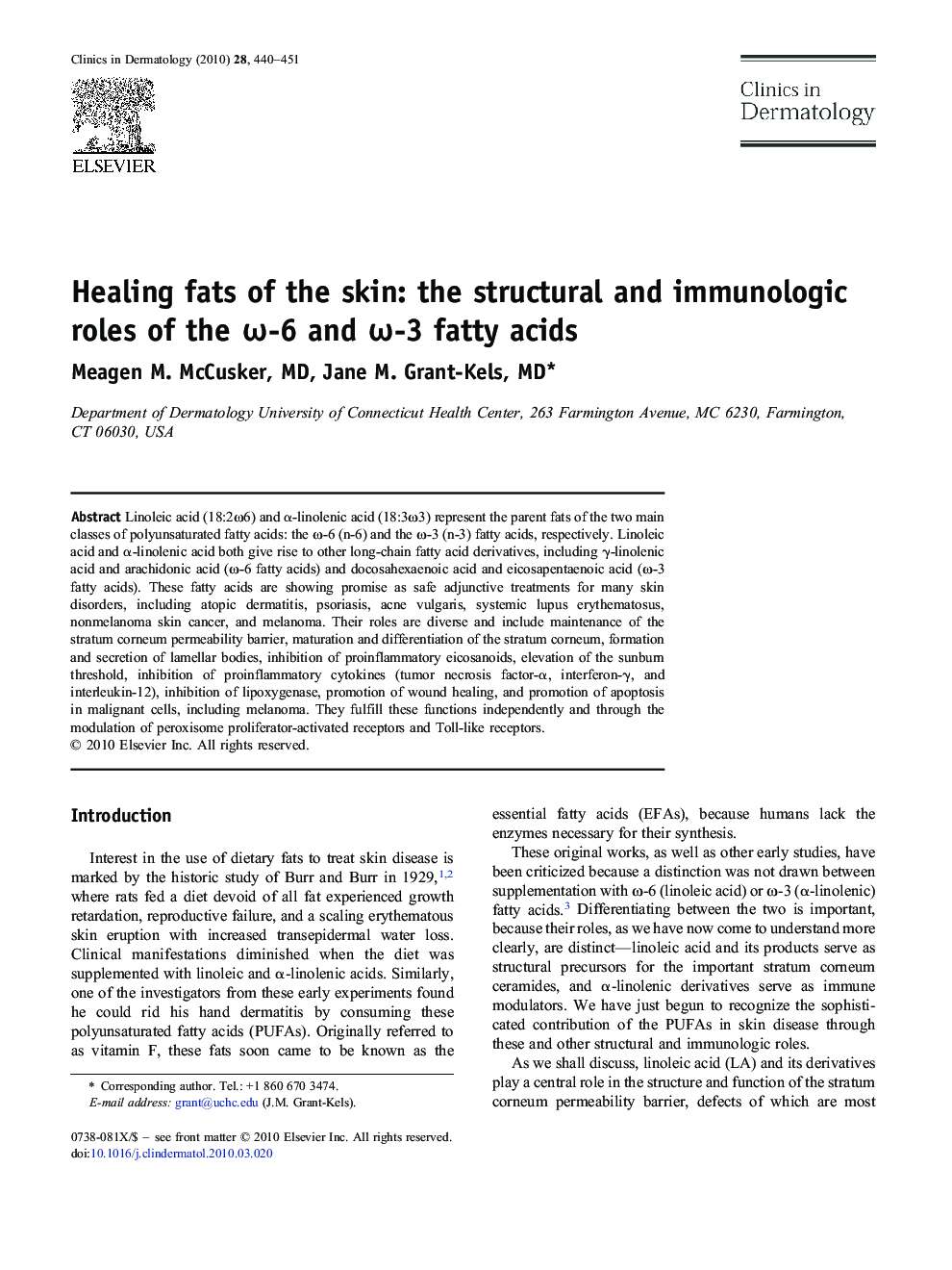| Article ID | Journal | Published Year | Pages | File Type |
|---|---|---|---|---|
| 3194734 | Clinics in Dermatology | 2010 | 12 Pages |
Linoleic acid (18:2ω6) and α-linolenic acid (18:3ω3) represent the parent fats of the two main classes of polyunsaturated fatty acids: the ω-6 (n-6) and the ω-3 (n-3) fatty acids, respectively. Linoleic acid and α-linolenic acid both give rise to other long-chain fatty acid derivatives, including γ-linolenic acid and arachidonic acid (ω-6 fatty acids) and docosahexaenoic acid and eicosapentaenoic acid (ω-3 fatty acids). These fatty acids are showing promise as safe adjunctive treatments for many skin disorders, including atopic dermatitis, psoriasis, acne vulgaris, systemic lupus erythematosus, nonmelanoma skin cancer, and melanoma. Their roles are diverse and include maintenance of the stratum corneum permeability barrier, maturation and differentiation of the stratum corneum, formation and secretion of lamellar bodies, inhibition of proinflammatory eicosanoids, elevation of the sunburn threshold, inhibition of proinflammatory cytokines (tumor necrosis factor-α, interferon-γ, and interleukin-12), inhibition of lipoxygenase, promotion of wound healing, and promotion of apoptosis in malignant cells, including melanoma. They fulfill these functions independently and through the modulation of peroxisome proliferator-activated receptors and Toll-like receptors.
